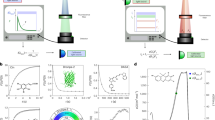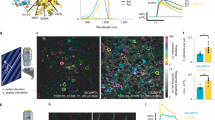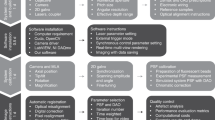Abstract
Power output of light bulbs changes over time and the total energy delivered will depend on the optical beam path of the microscope, filter sets and objectives used, thus making comparison between experiments performed on different microscopes complicated. Using a thermocoupled power meter, it is possible to measure the exact amount of light applied to a specimen in fluorescence microscopy, regardless of the light source, as the light power measured can be translated into a power density at the sample. This widely used and simple tool forms the basis of a new degree of calibration precision and comparability of results among experiments and setups. Here we describe an easy-to-follow protocol that allows researchers to precisely estimate excitation intensities in the object plane, using commercially available opto-mechanical components. The total duration of this protocol for one objective and six filter cubes is 75 min including start-up time for the lamp.
This is a preview of subscription content, access via your institution
Access options
Subscribe to this journal
Receive 12 print issues and online access
$259.00 per year
only $21.58 per issue
Buy this article
- Purchase on Springer Link
- Instant access to full article PDF
Prices may be subject to local taxes which are calculated during checkout









Similar content being viewed by others
References
Model, M.A. & Blank, J.L. Intensity calibration of a laser scanning confocal microscope based on concentrated beads. Anal. Quant. Cytol. Histol. 28, 253–261 (2006).
Zwier, J.M., Van Rooij, G.J., Hofstraat, J.W. & Brakenhoff, G.J. Image calibration in fluorescence microscopy. J. Microsc. 216, 15–24 (2004).
Fusco, D. et al. Single mRNA molecules demonstrate probabilistic movement in living mammalian cells. Curr. Biol. 13, 161–167 (2003).
Murray, J.M., Appleton, P.L., Swedlow, J.R. & Waters, J.C. Evaluating performance in three-dimensional fluorescence microscopy. J. Microsc. 228, 390–405 (2007).
Beach, J.M. A LED calibration source for dual-wavelength microscopy. Cell Calcium 105, 55–63 (1997).
Cho, E.H. & Lockett, S.J. Calibration and standardization of the emission light path of confocal microscopes. J. Microsc. 223, 15–25 (2006).
Kubitscheck, U. et al. Nuclear transport of single molecules: dwell times at the nuclear pore complex. J. Cell Biol. 168, 233–243 (2005).
Grünwald, D., Hoekstra, A., Dange, T., Buschmann, V. & Kubitscheck, U. Direct observation of single protein molecules in aqueous solution. ChemPhysChem 7, 812–815 (2006).
Shaner, N.C. et al. Improving the photostability of bright monomeric orange and red fluorescent proteins. Nat. Methods 5, 545–551 (2008).
Burger, W. & Burge, M.J. Digital Image Processing: An Algorithmic Introduction using Java (Springer-Verlag, New York, 2008).
Acknowledgements
The authors thank Fedor Subach for help with photography, Amber Wells for providing cells and stainings, Christina Polumbo for testing the protocol for facility use and Saumil Gandhi for bringing the original problem back on our agenda. This work was supported by National Institutes of Health grants to R.H.S and a DFG postdoctoral fellowship (GR3388/1) to D.G. Photographs have been adjusted in size and for best display of features using Photoshop CS (Adobe). Images for Figure 9 have been adjusted to 8-bit using ImageJ.
Author information
Authors and Affiliations
Corresponding author
Rights and permissions
About this article
Cite this article
Grünwald, D., Shenoy, S., Burke, S. et al. Calibrating excitation light fluxes for quantitative light microscopy in cell biology. Nat Protoc 3, 1809–1814 (2008). https://doi.org/10.1038/nprot.2008.180
Published:
Issue Date:
DOI: https://doi.org/10.1038/nprot.2008.180
This article is cited by
-
Fluorescence to measure light intensity
Nature Methods (2023)
-
Recent advances in the standardization of fluorescence microscopy for quantitative image analysis
Biophysical Reviews (2022)
-
High-efficiency optogenetic silencing with soma-targeted anion-conducting channelrhodopsins
Nature Communications (2018)
-
Biophysical constraints of optogenetic inhibition at presynaptic terminals
Nature Neuroscience (2016)
-
Slow unloading leads to DNA-bound β2-sliding clamp accumulation in live Escherichia coli cells
Nature Communications (2014)
Comments
By submitting a comment you agree to abide by our Terms and Community Guidelines. If you find something abusive or that does not comply with our terms or guidelines please flag it as inappropriate.



